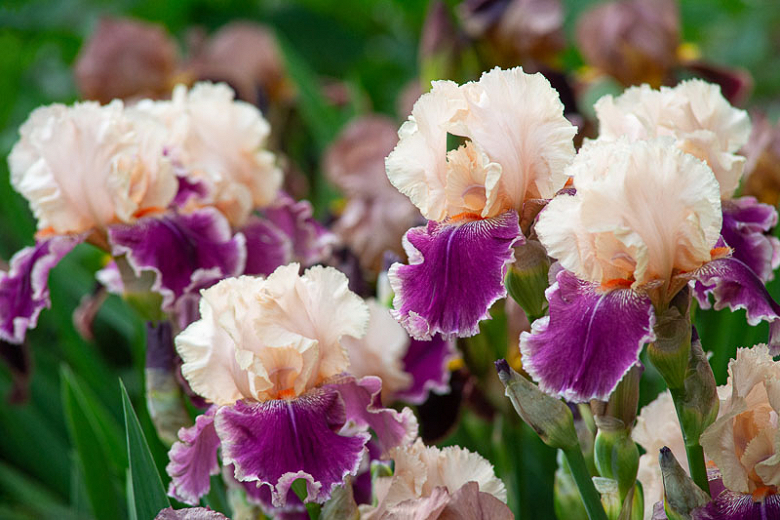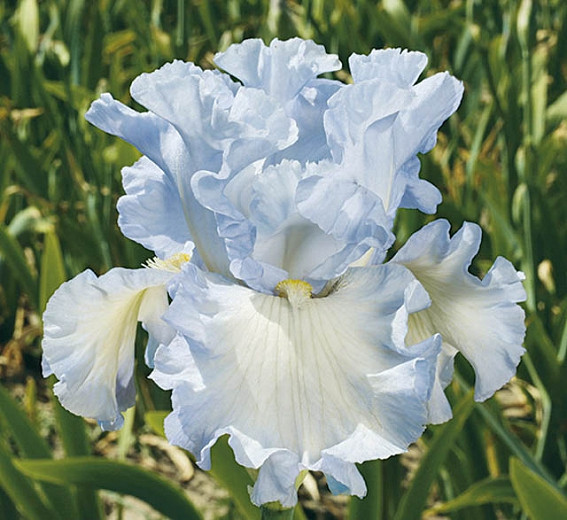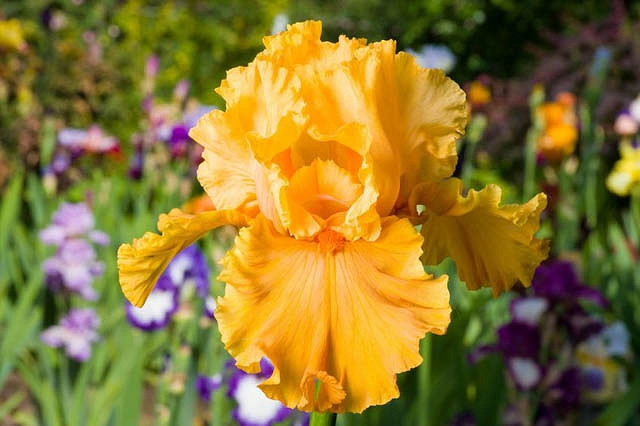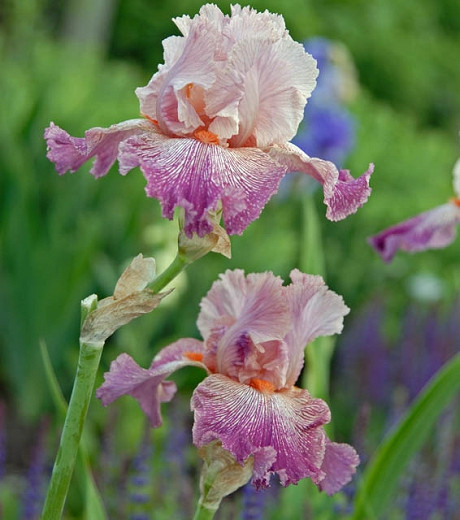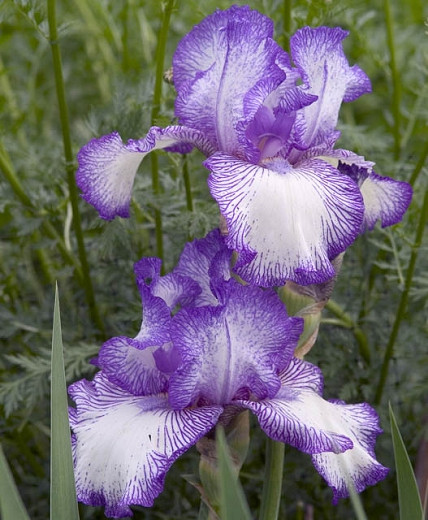Bearded Irises
Punch up your garden with color! The showiest members of the genus ‘Iris’, Bearded Irises (Iris germanica) should have a place in any garden. While there are thousands of cultivars, all bear flowers with 6 petals: 3 upright petals (standards) and 3 dropping petals (falls) displaying a fuzzy line or beard in their center, guiding insects towards the pollen.
The showiest members of the genus 'Iris', Bearded Irises (Iris germanica) should have a place in any garden. While there are thousands of cultivars, all bear flowers with 6 petals: 3 upright petals (standards) and 3 dropping petals (falls) displaying a fuzzy line or beard in their center, guiding insects towards the pollen.
- Flowers come in an array of gorgeous colors in the spring (April to June depending on the cultivar) with some cultivars re-blooming in the summer and fall.
- Many re-blooming iris are fragrant.
- Perform best in full sun in humus-rich, medium moisture, well-drained soils. They tolerate light shade, but the best flowering and disease resistance occurs in full sun. Good soil drainage is essential to prevent rot issues.
- Grow from creeping rhizomes which store food produced by the sword-shaped, semi-evergreen leaves and form large clumps over time
- Welcomed additions to herbaceous borders, sunny courtyards, or urban gardens where the sword-like foliage and vibrant colors will combine harmoniously with the stones and angular hardscaping. Roses provide a lovely backdrop to the tall varieties while the miniature dwarf irises are well suited to containers or rock gardens. Miniature Tall Bearded Irises are perfect for the vase.
- The best time to plant bearded iris is July through September. Container-grown iris can be planted in the spring.
- Bearded irises are classified by height and flower size into 6 groups. Since these groups bloom at slightly different times, combining specimens from different groups will extend your color display for a couple of weeks.
Guide Information
|
